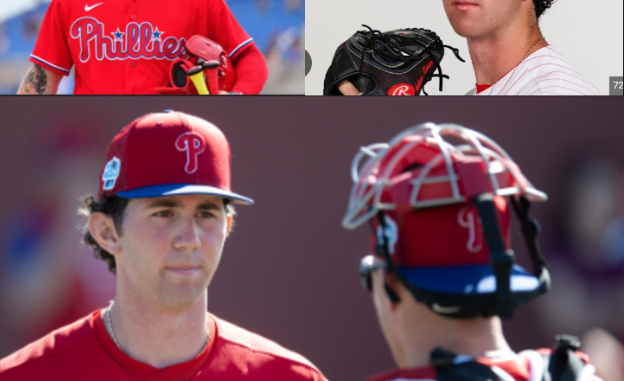
The Philadelphia Phillies are doubling down on their commitment to nurturing young talent, with Andrew Painter at the center of their long-term vision. Painter, the 20-year-old phenom widely regarded as one of MLB’s top pitching prospects, is set to play a pivotal role in the Phillies’ future. Recognizing his immense potential, the organization has unveiled a carefully calibrated plan to manage his workload and ensure sustained success.
Balancing Development and Preservation
Painter’s meteoric rise through the Phillies’ farm system has been a testament to his extraordinary talent. After dominating at the Double-A level in 2023, the right-hander has drawn comparisons to some of baseball’s elite pitchers. However, with greatness comes responsibility, and the Phillies are intent on safeguarding their prized prospect from the pitfalls of overuse and injury.
“We’re taking a proactive approach with Andrew,” Phillies President of Baseball Operations Dave Dombrowski explained. “Our focus is on balancing his development as a top-tier pitcher with the need to preserve his arm for the long haul.”
The Strategic Plan
The Phillies’ strategy revolves around three key pillars:
- Innings Limits: Painter will begin the 2025 season on a carefully monitored innings limit. This approach aligns with the industry’s best practices for young pitchers. By gradually increasing his workload, the Phillies aim to acclimate Painter to the rigors of a full MLB season without jeopardizing his health.
- Rest Periods: The team plans to incorporate scheduled rest periods throughout the season. These breaks will allow Painter to recover physically and mentally, reducing the risk of fatigue-related injuries.
- Hybrid Role: To ease his transition to the majors, Painter may begin the season in a hybrid role, splitting time between the starting rotation and the bullpen. This approach allows him to contribute meaningfully while managing his innings.
Learning from the Past
The Phillies’ cautious approach stems from lessons learned across the league. Organizations like the Washington Nationals and Los Angeles Dodgers have faced scrutiny over the handling of young pitchers such as Stephen Strasburg and Walker Buehler. By adopting a methodical strategy, the Phillies hope to avoid similar pitfalls.
“We’ve studied how other teams have managed top pitching prospects,” Dombrowski noted. “It’s about finding the right balance between competitiveness and caution.”
Painter’s Perspective
For Painter, the Phillies’ plan is both a vote of confidence and a reminder of the high expectations placed on his shoulders.
“I trust the Phillies’ process completely,” Painter said during a recent interview. “They’ve been transparent about their plans, and I know they have my best interests in mind. My goal is to stay healthy, keep improving, and help this team win.”
The Road Ahead
The Phillies are optimistic that their meticulous approach will pay dividends. As they look to build on their recent playoff successes, Painter’s emergence could provide the franchise with a formidable weapon for years to come. By prioritizing his health and development, the team is setting the stage for sustainable success in one of baseball’s most competitive divisions.
“Andrew has the potential to be a cornerstone of our rotation,” said Phillies manager Rob Thomson. “With the right plan in place, we’re confident he’ll thrive at the major league level.”
Conclusion
The Phillies’ strategy to manage Andrew Painter’s workload reflects a forward-thinking approach to player development. By blending caution with ambition, the organization is paving the way for a bright future—one in which Painter’s arm becomes a key ingredient in their pursuit of championship glory.

Leave a Reply